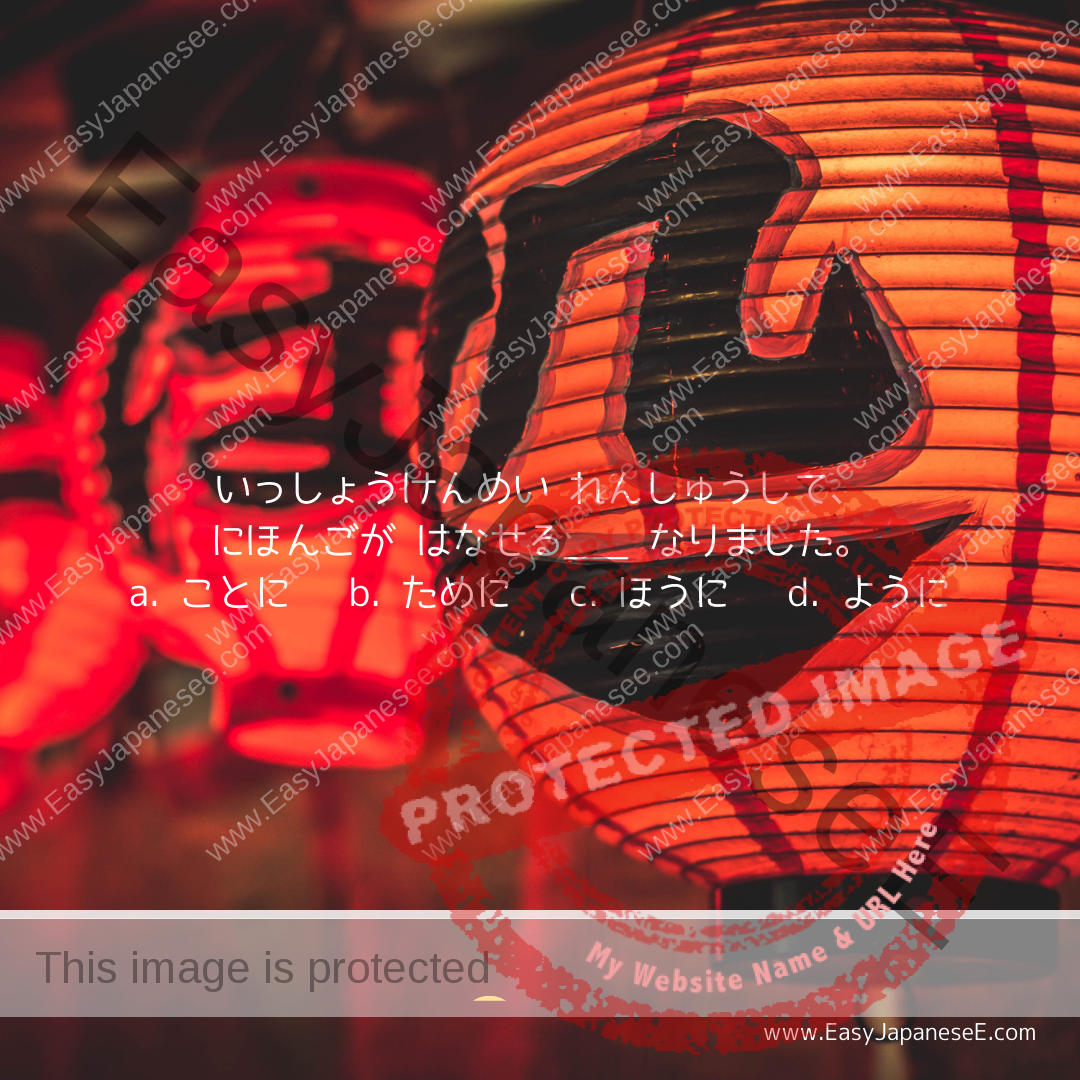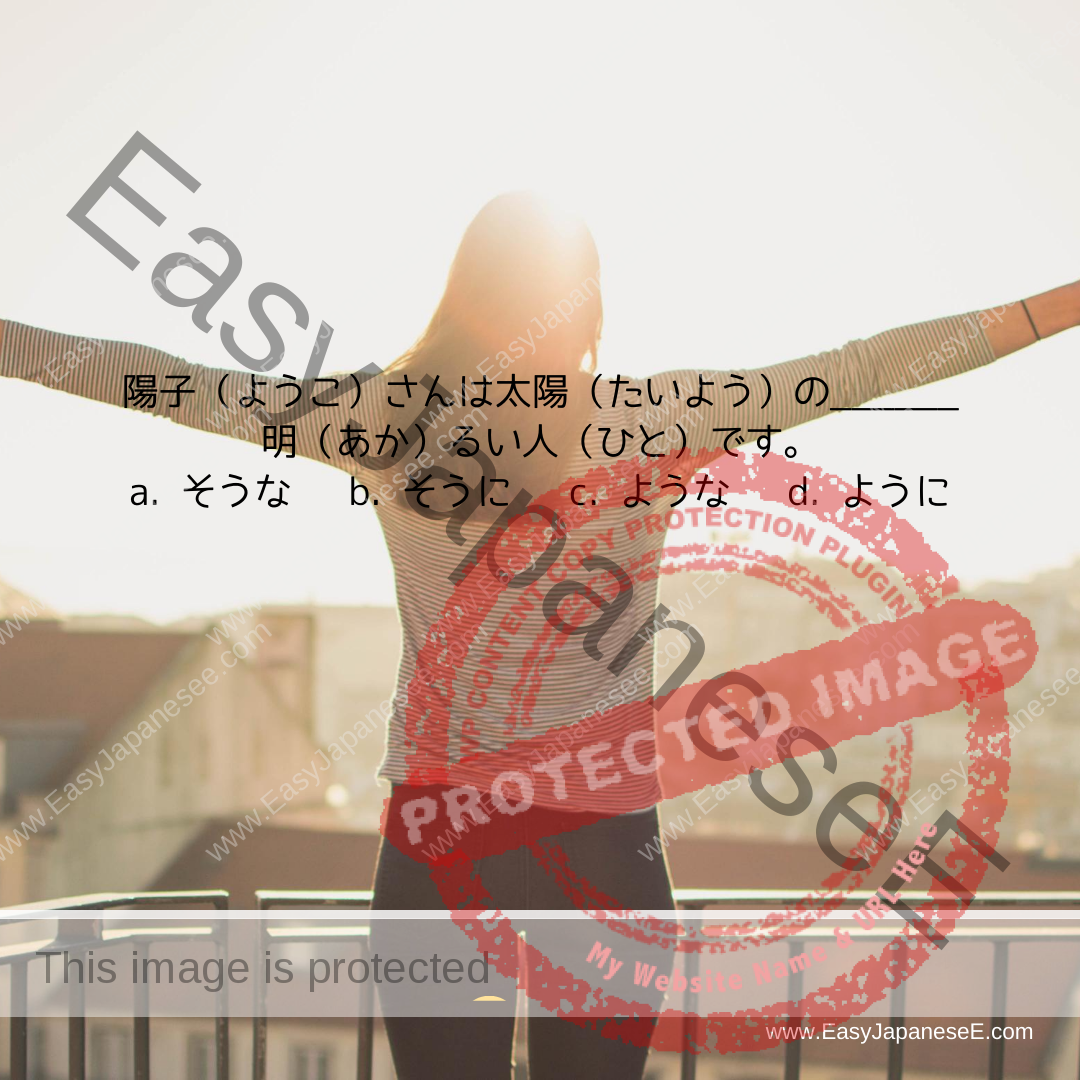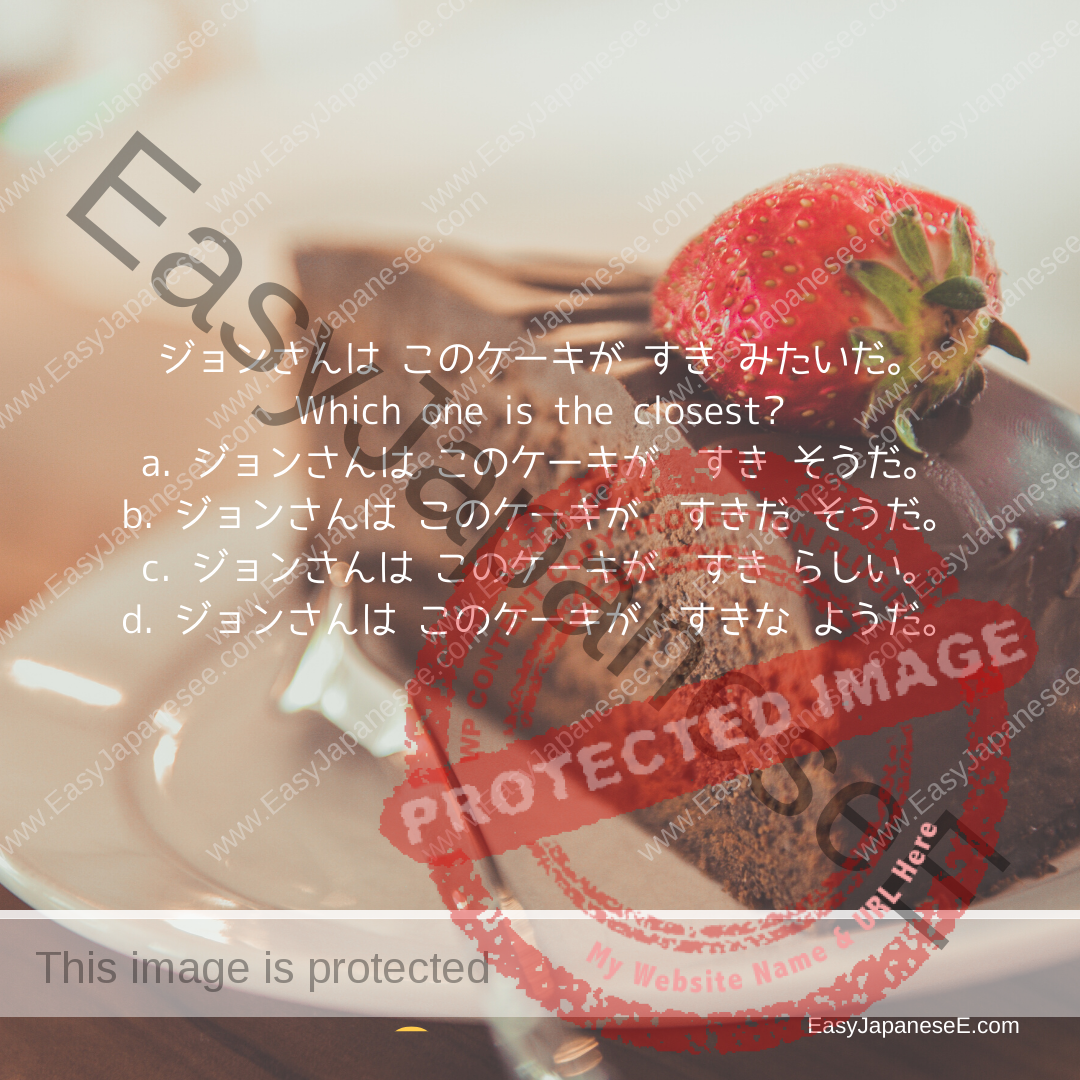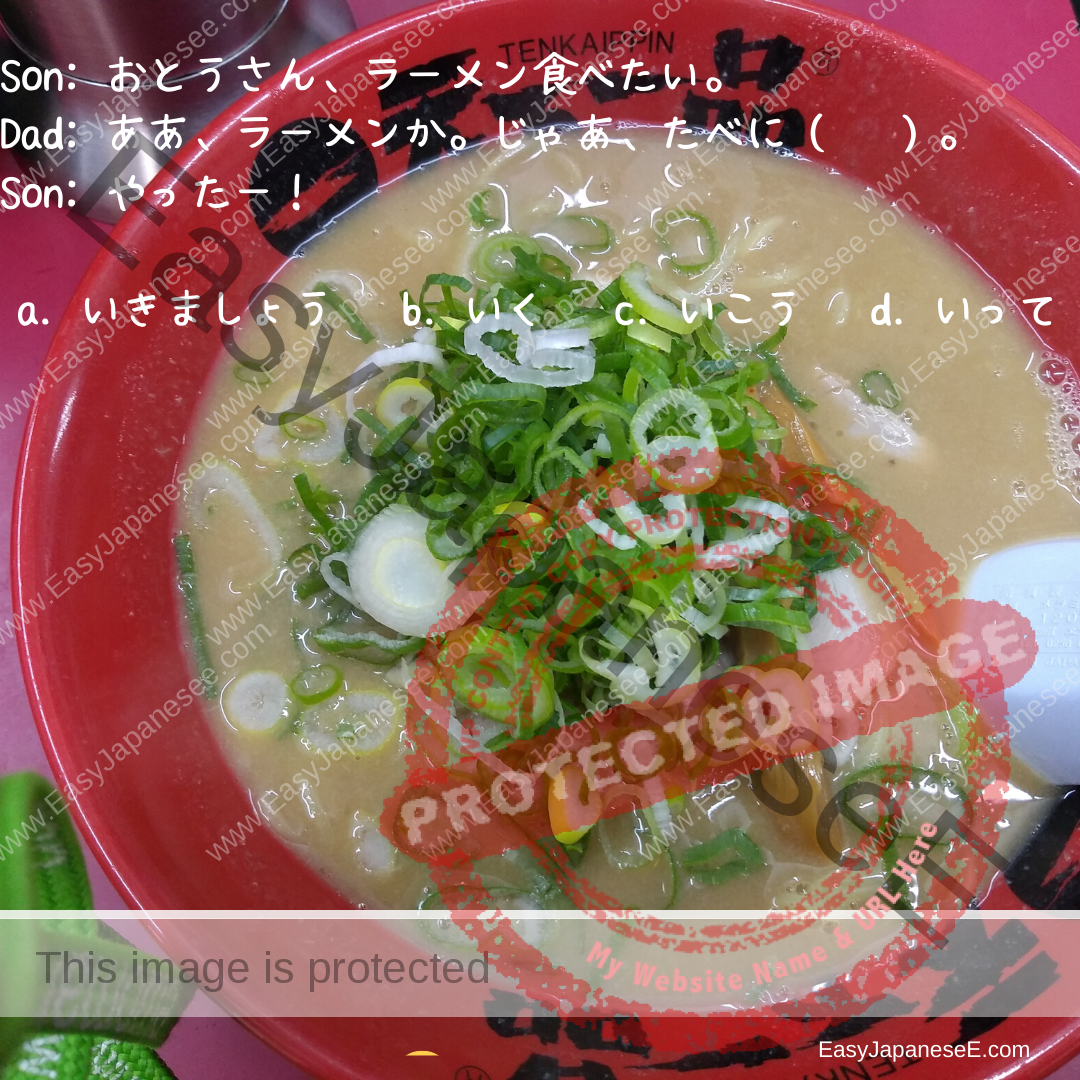~ようです/~ようだ is equivalent of !It seems…” in English and is often used to soften the tone of a statement. Check how it’s used here.


~ようです/~ようだ is equivalent of !It seems…” in English and is often used to soften the tone of a statement. Check how it’s used here.

Today’s grammar point is ~ようなきがする. 気がする alone already means “to have a hunch that…” but by adding ~ような, it gives the feeling that the hunch is not as strong.

Today’s grammar point is ~ようでもあり…, which is used in an ambivalent situation. I can be rephrased as ~ようでもあるし… or in a conversation, ~ような…ような can be used.

Today’s grammar point is ~ようがない. ~ようがない means “there is no way ~” which is an expression to emphasise something is impossible.

このもんだいは ふくざつに___けど、じつは かんたんです。a. みえる b. みつける c. みる d. みられる The correct answer is a. みえる. 見(み)える has a few…

~ようにする is used with a dictionary form verb to describe a conscious effort to do ~. It can be used with a ないform verb to describe a conscious effort NOT to do ~.

~ようになる is often used with a potential (form) verb to describe an acquisition of a skill. If NOT used with a potential (form) verb, it means “to start to …”

よう is used for a metaphor, “like ~,” but it is usually used either ~ような or ~ように. This post explains when to use ~ような and when to use ~ように.

みたい、らしい、そう、よう are all used to describe your allegation, judgement or prediction based on what you have seen/heard. Today I will try to explain the differences.

Son: おとうさん、ラーメン食べたい。Dad: ああ、ラーメンか。じゃあ、たべに( )。 Son: やったー! a. いきましょう b. いく c. いこう d. いって The translation of the…

ために and ように can both be translated as “in order to” but they are not always interchangeable. This post explains when to use which.
